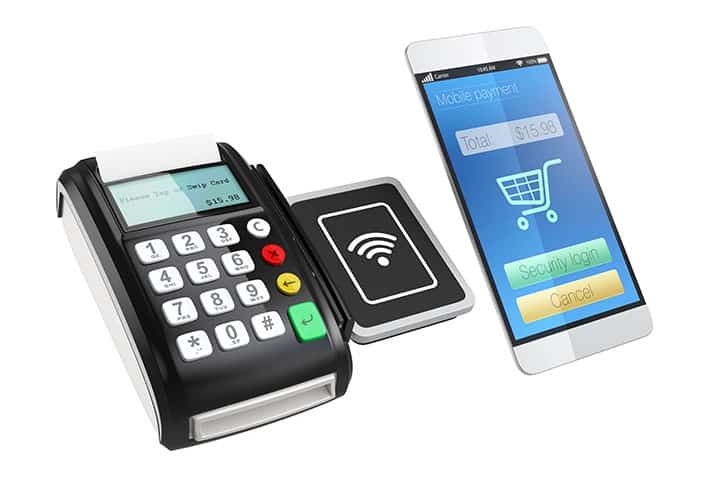Find out what you need to know in order to choose the best credit card processing equipment for your business. We’ll look at the most important features along with what to avoid.
Having the right equipment can open up new opportunities for your business, allowing you to accept more forms of payment via convenient, cutting-edge technology.
However, the opposite is true if you don’t have the right equipment: business might grind to a halt.
Equipment that isn’t working right means you can’t process payments. And with each minute you can’t process payments, your business is officially losing money, which it will continue to do until the matter gets resolved.
On top of that, there can be fees you might be charged from having the wrong payment processing equipment that can take a toll on your bottom line.
Find out what you need to know about credit card processing equipment to avoid problems and keep your business moving forward. We’ll start with what features your business might need.
Get the features you need
The fact is, every business is unique. Even in the same industry, no two businesses are exactly alike; each one has their own mission, culture, size, and direction they’re moving towards.
Payment processing equipment has adapted to accommodate this huge variety of business types, with different functions, features, accessories, services, and more.
Listing every possible difference in payment processing equipment would take days to read. Instead, we’ll focus on the most important ones:
- How the card is read. This can include swipe, chip, and PIN features. Many in recent years have opted for contactless machines for accepting payment, especially in light of the COVID-19 pandemic.
- Where the reader is used. Some businesses need to be able to accept payment anywhere. Thus, they need card readers that can be attached to mobile devices for payments-on-the-go.
- More than just payment processing. Many companies go with Point of Sale systems that allow you to not only take payment, but also provide additional features such as analyzing revenue, predict stock needs, or integrate with accounting software.
- Online payment possibilities. As more businesses go online, they need virtual terminals for accepting payments on the web.
Again, these are just the basic features that have become essential for many businesses. However, not all of them are required for everyone. For example, you might not need a virtual terminal for online payments or on-the-go card readers.
What does matter, though, is that your equipment is secure. Let’s look at that next.
Why PCI compliance is a must
This isn’t just an arbitrary hoop you need to jump through. Rather, the payment card industry (PCI) has a set of standards that all parties need to meet to process credit cards. These standards make sure that payments are secure and protected.
As a result, the various equipment and technology used for taking payments must be PCI compliant. It’s for everyone’s benefit to be PCI compliant: your business so that you don’t leak sensitive financial information, your customers to keep their credit card data secure, and the credit card industry so that it remains a trusted one.
What happens if you don’t have PCI compliant equipment? You’ll pay for it, literally. Compared to the small amount that payment processors charge to be PCI compliant, the non-compliance fee is steep—around 5x more than the compliance fee.
Since security standards are always changing, so is compliance. You will need to renew your compliance every year to keep up to date.
However, not every processor will be willing to help. So as you’re choosing a payment processor, talk to them and find out their approach to PCI compliance to ensure you meet all the regulations. A processor that’s willing to help is a sign that you’ve chosen a quality processing company to partner with.
PCI non-compliance isn’t the only thing you need to avoid. There’s also equipment that can cause you stress and cost you money. We’ll examine what that is next.
Equipment that you should avoid
You’ve probably seen it a thousand times by now: big, bright letters that read “FREE”… with an asterisk next to it. Reading the fine print reveals it has plenty of strings attached.
Free equipment is no different: if you’re offered something of value for nothing, you can be sure the processing company is making up for their loss at your expense. How?
By getting you stuck in a long, overly-expensive contract. They can be a year or even multi-year contracts.
In every case, it’s much better for you to buy the equipment upfront and enter a month-to-month contract. This will help you avoid being locked into one processor, letting you switch to another if you find a better deal elsewhere.
You might also think about renting equipment. This is less risky than “free” equipment, However you will end up paying more for your technology in the long run compared to just buying it outright.
Summary
Your business needs are different from everyone else. That means your equipment needs are unique as well. So to make the best decision, you need to both establish your current equipment needs and anticipate your future needs as you continue to grow.
Features like contactless payment, mobile card readers, and virtual terminals for online payments continue to become commonplace, letting businesses adapt to new environments and circumstances.
However, there are some aspects to equipment that are universal. These include the importance of being PCI-compliant to maintain high security and avoid fees, and avoiding so-called “free” equipment that locks you into a long, expensive contract.
Since there’s so many factors to weigh, we at Progressive Payments Solutions want to help. We believe your business deserves every advantage, especially when it comes to having all of the facts in order to make the best decision.
That’s why we put together a comprehensive guide to help you learn the five most important steps to choosing a payment processor. Grab a complimentary download and start saving money today.
